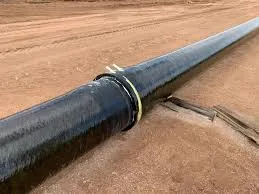
-
 Afrikaans
Afrikaans -
 Albanian
Albanian -
 Amharic
Amharic -
 Arabic
Arabic -
 Armenian
Armenian -
 Azerbaijani
Azerbaijani -
 Basque
Basque -
 Belarusian
Belarusian -
 Bengali
Bengali -
 Bosnian
Bosnian -
 Bulgarian
Bulgarian -
 Catalan
Catalan -
 Cebuano
Cebuano -
 China
China -
 China (Taiwan)
China (Taiwan) -
 Corsican
Corsican -
 Croatian
Croatian -
 Czech
Czech -
 Danish
Danish -
 Dutch
Dutch -
 English
English -
 Esperanto
Esperanto -
 Estonian
Estonian -
 Finnish
Finnish -
 French
French -
 Frisian
Frisian -
 Galician
Galician -
 Georgian
Georgian -
 German
German -
 Greek
Greek -
 Gujarati
Gujarati -
 Haitian Creole
Haitian Creole -
 hausa
hausa -
 hawaiian
hawaiian -
 Hebrew
Hebrew -
 Hindi
Hindi -
 Miao
Miao -
 Hungarian
Hungarian -
 Icelandic
Icelandic -
 igbo
igbo -
 Indonesian
Indonesian -
 irish
irish -
 Italian
Italian -
 Japanese
Japanese -
 Javanese
Javanese -
 Kannada
Kannada -
 kazakh
kazakh -
 Khmer
Khmer -
 Rwandese
Rwandese -
 Korean
Korean -
 Kurdish
Kurdish -
 Kyrgyz
Kyrgyz -
 Lao
Lao -
 Latin
Latin -
 Latvian
Latvian -
 Lithuanian
Lithuanian -
 Luxembourgish
Luxembourgish -
 Macedonian
Macedonian -
 Malgashi
Malgashi -
 Malay
Malay -
 Malayalam
Malayalam -
 Maltese
Maltese -
 Maori
Maori -
 Marathi
Marathi -
 Mongolian
Mongolian -
 Myanmar
Myanmar -
 Nepali
Nepali -
 Norwegian
Norwegian -
 Norwegian
Norwegian -
 Occitan
Occitan -
 Pashto
Pashto -
 Persian
Persian -
 Polish
Polish -
 Portuguese
Portuguese -
 Punjabi
Punjabi -
 Romanian
Romanian -
 Russian
Russian -
 Samoan
Samoan -
 Scottish Gaelic
Scottish Gaelic -
 Serbian
Serbian -
 Sesotho
Sesotho -
 Shona
Shona -
 Sindhi
Sindhi -
 Sinhala
Sinhala -
 Slovak
Slovak -
 Slovenian
Slovenian -
 Somali
Somali -
 Spanish
Spanish -
 Sundanese
Sundanese -
 Swahili
Swahili -
 Swedish
Swedish -
 Tagalog
Tagalog -
 Tajik
Tajik -
 Tamil
Tamil -
 Tatar
Tatar -
 Telugu
Telugu -
 Thai
Thai -
 Turkish
Turkish -
 Turkmen
Turkmen -
 Ukrainian
Ukrainian -
 Urdu
Urdu -
 Uighur
Uighur -
 Uzbek
Uzbek -
 Vietnamese
Vietnamese -
 Welsh
Welsh -
 Bantu
Bantu -
 Yiddish
Yiddish -
 Yoruba
Yoruba -
 Zulu
Zulu
Fiberglass Ducts and Their Resistance to Corrosion in Various Environments
Understanding Fiberglass Duct Corrosion Resistance
In modern construction and HVAC (heating, ventilation, and air conditioning) systems, the choice of materials is critical for ensuring durability and efficiency. One material that has gained considerable attention for its properties is fiberglass. Specifically, fiberglass ductwork has become a popular option due to its unique blend of benefits, particularly its corrosion resistance.
Corrosion is a pervasive problem that affects many industrial and commercial facilities. With exposure to various environmental factors—including humidity, chemicals, and pollutants—traditional materials like metal ducts can deteriorate over time, leading to expensive repairs and decreased air quality. Fiberglass ducts, however, offer a robust solution that mitigates these issues thanks to their non-metallic composition.
Understanding Fiberglass Duct Corrosion Resistance
In addition to being resistant to corrosion, fiberglass ducts also exhibit excellent thermal insulation properties. They can maintain the temperature of the air being transported, therefore improving energy efficiency and reducing heating and cooling costs. This characteristic is particularly beneficial in climates with extreme temperature variations, where loss of conditioned air through conductive materials can lead to significant energy wastage.
fiberglass duct corrosion resistance

Another important aspect of fiberglass duct systems is their lightweight design. Compared to traditional metal ductwork, fiberglass is significantly lighter, making installation easier and less labor-intensive. This can lead to lower overall installation costs and reduced strain on supporting structures. Additionally, the flexibility of fiberglass allows for more creative and efficient layouts than rigid metal ducts.
Moreover, fiberglass ducts are less prone to microbial growth, which is a common problem associated with metal ducts, especially in humid environments. The smooth internal surface of fiberglass ducting prevents particulate buildup, thus reducing the likelihood of contamination and improving indoor air quality. This becomes particularly vital in settings such as hospitals, schools, and offices where air quality is paramount for health and productivity.
While fiberglass ductwork offers numerous advantages, potential buyers must also consider certain aspects. For instance, installation must be done by professionals familiar with fiberglass products to ensure proper sealing and connection, as leaks can negate many of the benefits. Furthermore, the choice of resin and fiberglass quality can significantly influence the duct's performance, making it essential to select high-grade materials from reputable manufacturers.
In conclusion, fiberglass ductwork stands out as a superior option for environments where corrosion resistance is a critical factor. Its ability to resist rust, combined with thermal efficiency, lightweight characteristics, and reduced microbial growth, makes it an appealing choice for a wide range of applications. As industries continue to recognize the long-term benefits and cost savings associated with fiberglass, it is likely that its usage will expand further, solidifying its place in the future of HVAC systems.









